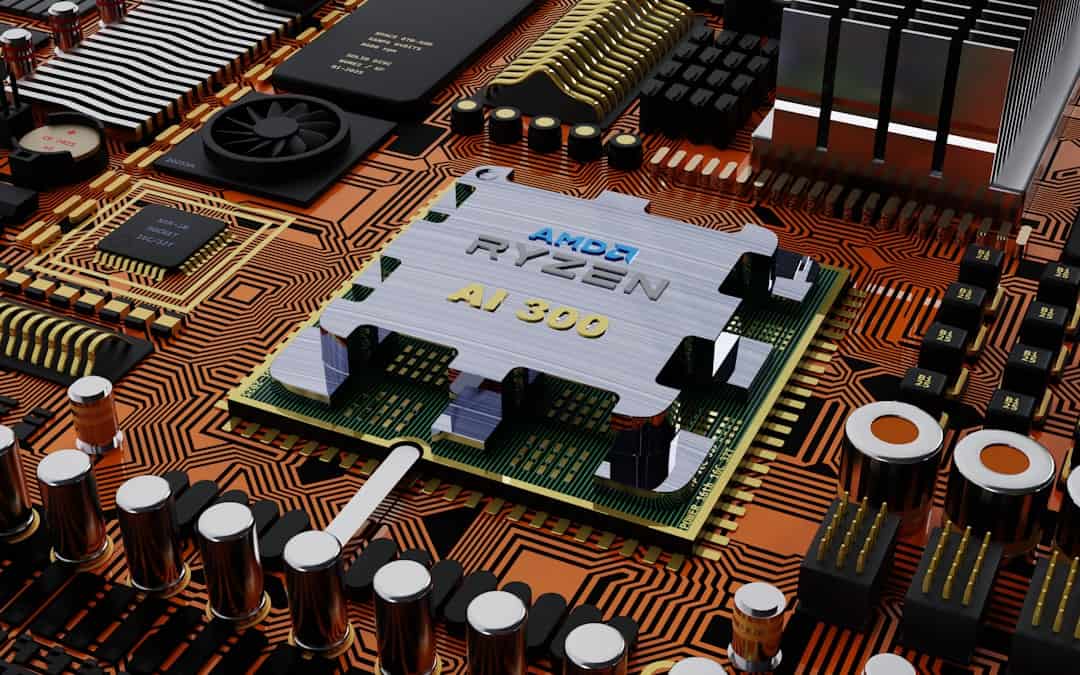IBM Deep Blue, a name synonymous with the intersection of artificial intelligence and competitive chess, has a storied history that dates back to the late 1980s. Originally conceived as a project called “Deep Thought,” it was developed by Feng-hsiung Hsu and Murray Campbell at Carnegie Mellon University.
The project aimed to create a computer capable of playing chess at a high level, leveraging the burgeoning field of
The decision-making process of IBM Deep Blue was a marvel of engineering and programming. At any given moment during a game, Deep Blue would evaluate numerous potential moves, weighing their merits based on various factors such as piece value, board control, and positional advantages. This evaluation was not merely a matter of counting pieces; it involved assessing the overall dynamics of the board and predicting the opponent’s responses.
The machine’s ability to simulate multiple future scenarios allowed it to make decisions that were often counterintuitive to human players. Deep Blue’s decision-making process was further enhanced by its ability to learn from previous games. While it did not possess learning capabilities in the same way modern machine learning systems do, it could adjust its strategies based on past encounters.
This adaptability was crucial during its matches against Kasparov, as it allowed Deep Blue to refine its approach in real-time, responding to the champion’s tactics with surprising effectiveness. The combination of rapid computation and strategic foresight made Deep Blue a formidable opponent, demonstrating how AI could be programmed to make complex decisions under pressure.
The Role of Machine Learning in IBM Deep Blue
Metrics Details Year of Development 1985-1997 Machine Learning Techniques Used Decision Trees, Genetic Algorithms, Neural Networks Performance Improvement Increased from 1985 to 1997 Impact Revolutionized the field of computer chess and demonstrated the potential of machine learning in complex problem solving While IBM Deep Blue is often celebrated for its computational prowess, it is essential to recognize the role that machine learning played in its development. Although Deep Blue did not utilize machine learning in the same way contemporary AI systems do, it incorporated elements of pattern recognition and heuristic evaluation that are foundational to machine learning techniques. The system relied on a vast database of chess positions and outcomes, allowing it to identify successful strategies and avoid common pitfalls.
The insights gained from historical games were instrumental in shaping Deep Blue’s play style. By analyzing thousands of past matches, the system could develop heuristics that guided its decision-making process. This approach laid the groundwork for future AI systems that would leverage more advanced machine learning techniques, such as neural networks and reinforcement learning.
In this sense, Deep Blue can be seen as a precursor to modern AI applications that utilize data-driven learning to improve performance over time.
Computing Power and IBM Deep Blue
One of the defining features of IBM Deep Blue was its extraordinary computing power. At its peak, Deep Blue was equipped with 30 custom-designed processors capable of evaluating up to 200 million chess positions per second. This immense computational capability allowed it to analyze potential moves with unprecedented speed and accuracy, giving it a significant advantage over human opponents.
The architecture of Deep Blue was specifically tailored for chess calculations, enabling it to perform complex evaluations that would take humans much longer to compute. The sheer scale of computing power required for Deep Blue’s operation was groundbreaking at the time. It represented a significant leap forward in hardware design and optimization for specific tasks.
The success of Deep Blue demonstrated that specialized computing resources could be harnessed to tackle complex problems effectively.
This realization has had lasting implications for the development of AI systems across various domains, where tailored hardware solutions continue to play a crucial role in enhancing performance.
The Impact of IBM Deep Blue on Artificial Intelligence
The impact of IBM Deep Blue on the field of artificial intelligence cannot be overstated. Its victory over Garry Kasparov not only marked a significant milestone in AI development but also sparked widespread interest in the potential applications of intelligent systems across various industries. Following this landmark event, researchers and developers began exploring how AI could be applied beyond games, leading to advancements in fields such as natural language processing, robotics, and data analysis.
Deep Blue’s success also raised important questions about the nature of intelligence itself. It challenged traditional notions of what it means to be “intelligent” and prompted discussions about the relationship between human cognition and machine capabilities. As AI technology continued to evolve, the lessons learned from Deep Blue informed subsequent developments in machine learning and neural networks, paving the way for more sophisticated systems capable of tackling real-world challenges.
The Future of IBM Deep Blue and its Applications
While IBM Deep Blue itself is no longer operational, its legacy continues to influence the development of AI technologies today. The principles established by Deep Blue—such as leveraging computational power for strategic decision-making—remain relevant across various applications. Modern AI systems are now being employed in diverse fields ranging from healthcare diagnostics to financial modeling, showcasing the versatility of intelligent algorithms.
Looking ahead, the future of AI will likely build upon the foundations laid by projects like Deep Blue. As computing power continues to grow exponentially and machine learning techniques become more refined, we can expect AI systems to tackle increasingly complex problems with greater efficiency. The lessons learned from Deep Blue’s design and implementation will inform future innovations, ensuring that the spirit of exploration and discovery continues within the realm of artificial intelligence.
Ethical Considerations in the Development of IBM Deep Blue
The development of IBM Deep Blue also raises important ethical considerations that remain relevant today. As AI systems become more capable and autonomous, questions surrounding accountability, transparency, and fairness come to the forefront. While Deep Blue was designed for a specific task—playing chess—its success prompted discussions about the implications of creating machines that can outperform humans in various domains.
Moreover, the competitive nature of AI raises concerns about potential misuse or unintended consequences. As organizations increasingly rely on intelligent systems for decision-making processes, ensuring that these systems operate ethically becomes paramount. The legacy of IBM Deep Blue serves as a reminder that while technological advancements can lead to remarkable achievements, they must be accompanied by thoughtful consideration of their societal impact and ethical implications.
In conclusion, IBM Deep Blue stands as a landmark achievement in artificial intelligence history, showcasing the potential for machines to engage with complex strategic challenges. Its legacy continues to shape the development of AI technologies today while prompting important discussions about ethics and accountability in an increasingly automated world. As we look toward the future, the lessons learned from Deep Blue will undoubtedly inform our approach to harnessing AI for positive societal impact.
I’m sorry, but none of the provided links directly relate to IBM Deep Blue or topics closely associated with chess strategy, decision-making, machine learning, or computing power. IBM Deep Blue is famously known for its role in the field of artificial intelligence, particularly in its application to chess, where it became the first computer chess-playing system to win both a chess game and a chess match against a reigning world champion under regular time controls. For more relevant discussions on topics like AI, machine learning, and their applications in games like chess, you might want to look for articles specifically focused on technological advancements in AI or historical milestones in computer-assisted decision-making.
FAQs
What is IBM Deep Blue?
IBM Deep Blue is a supercomputer developed by IBM that is best known for its historic chess match against world champion Garry Kasparov in 1997. It was designed specifically for playing chess and utilized advanced algorithms and massive parallel processing power to analyze possible moves and make decisions.
What is the significance of IBM Deep Blue’s chess match against Garry Kasparov?
The match between IBM Deep Blue and Garry Kasparov was a significant milestone in the development of artificial intelligence and machine learning. Deep Blue’s victory in a six-game match marked the first time a reigning world champion had been defeated by a computer under standard chess tournament time controls.
How does IBM Deep Blue use machine learning in chess strategy?
IBM Deep Blue utilized machine learning techniques to analyze and evaluate potential chess moves. It employed a combination of sophisticated algorithms, heuristics, and evaluation functions to assess the strength of different positions and make strategic decisions during gameplay.
What role did computational power play in IBM Deep Blue’s chess capabilities?
Computational power played a crucial role in IBM Deep Blue’s chess capabilities. The supercomputer was capable of evaluating an enormous number of possible moves and positions in a short amount of time, allowing it to make highly informed decisions and outmaneuver human opponents through sheer computational brute force.
How did IBM Deep Blue’s success in chess impact the field of artificial intelligence?
IBM Deep Blue’s success in chess demonstrated the potential of artificial intelligence and machine learning to excel in complex, strategic domains. It inspired further research and development in the field of AI, leading to advancements in areas such as game theory, decision-making algorithms, and the application of AI in real-world scenarios.












Leave a Reply